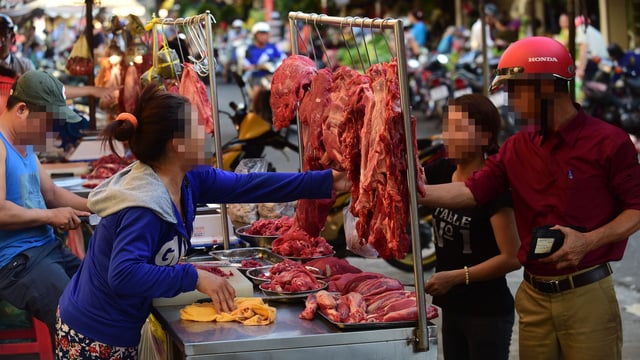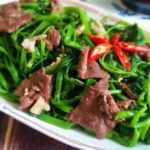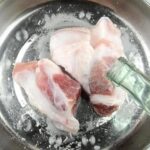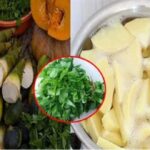There are distinct differences in the way pork and beef are sold in local markets, and it’s not just about the cuts of meat. Have you ever noticed that beef is often hung up high, while pork is displayed on tables or counters? There’s a surprising reason behind this practice.
Large cuts of beef are usually hung up high.
You may think it’s just about saving space, but there’s more to it. According to meat distributors, hanging beef has an impact on its tenderness. The quality of beef can vary between suppliers, not just because of the age of the cattle, but also due to how they process and hang the meat after slaughter.
Hanging beef allows the muscle fibers to stretch and relax, preventing “cold shortening.” This helps maintain the meat’s freshness, tenderness, and overall quality. Hangingsection
Hanging beef can affect its tenderness.
If beef is not hung, “cold shortening” can cause the meat to toughen and lose its quality.
Hanging beef also has sanitary benefits. Beef is typically sold without the hide, so hanging it reduces the surface area in contact with a flat surface, minimizing the risk of bacterial growth and moisture accumulation, which could spoil the meat.
Pork is usually displayed on tables or counters.
Pork, on the other hand, has a higher turnover rate. By placing it on tables, vendors can easily handle the meat and allow customers to inspect and choose their desired cuts.
Additionally, pork has more fat content. Hanging pork with its fatty portions may not be aesthetically pleasing and could give a negative impression to customers.
For these reasons, when it comes to selling both types of meat, hanging beef and displaying pork on tables is often the optimal solution.

Pork is typically displayed on tables.
Tips for choosing fresh and delicious pork and beef
+ Beef
When buying beef, pay attention to the color and appearance. Fresh beef has a bright red color, and if there’s fat, it should be light yellow. The tendons of good beef are white.
Additionally, press your finger into the meat. If it’s firm and bounces back, it’s fresh and of good quality. The meat shouldn’t be sticky but dry, without any slimy texture or unpleasant odors.
+ Pork
Fresh pork will have a natural pink hue, neither too dark nor too light. The fat should be white or slightly ivory-colored. If you cut a slice vertically, the meat fibers should be slightly contracted, the surface dry, and the rindsection
Look for a natural pink hue and white or slightly ivory-colored fat when choosing fresh pork.
“The Secret to Tender Stir-Fried Beef: A Marinade That Makes All the Difference”
Beef is a delicious and nutritious meat, but it can often turn out tough and chewy when stir-fried. The secret to overcoming this issue lies in understanding the art of tenderizing and preparing the beef through a few simple yet effective techniques. With the right methods, you can transform this hearty meat into a mouthwatering, tender delight that will leave your taste buds craving more.



































